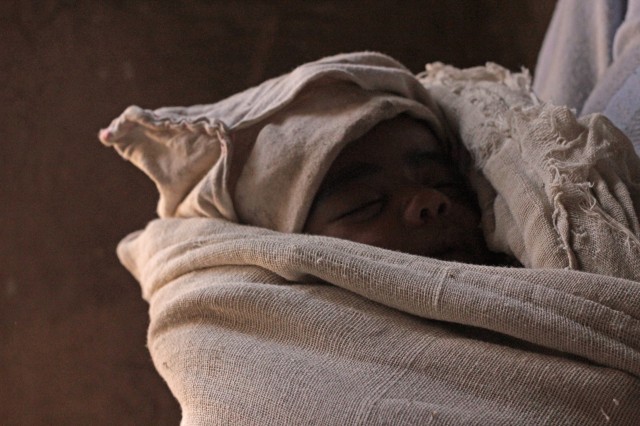
Maternal healthcare in the post-MDGs era: outputs are not always outcomes
3rd June 2014
The current Millennium Development Goals are coming to an end in 2015 and a new framework is being developed. Have the previous goals relating to improving maternal health actually been achieved, and are the reported improvements being experienced by individuals on the ground? Or does the new framework perhaps need a different focus when it comes to addressing shortfalls in maternal healthcare provision?
It is a complex goal, and previous initiatives – such as increased provision of medically trained staff – which only address one aspect of this multifaceted problem are unlikely to hold the key to long-term improvements. Greater understanding of the underlying factors contributing to infant and maternal mortality and accurate pictures of situations on the ground are vital if any great leaps are to be made in improving maternal healthcare provision and reducing maternal and infant mortality rates.
Improvements in maternal and neonatal death rates lag behind improvements in child survival because to reduce them requires a fully functional and effective health care system, including trained and supported staff (e.g. midwives) as part of this. Public health measures such as clean water, education, community support, immunisation, malaria prevention and nutritional supplements do help but don’t address other specific causes, such as obstructed labour, preterm babies, haemorrhage, etc.
Birth in the presence of a qualified midwife who has the skills and the equipment to deal with any complications will improve the outcome. But provision of a midwife does not necessarily guarantee uptake (or indeed quality of care). Training must be continuous, and midwives must have access to equipment and some basic drugs to address common complications.
Child deaths around birth are described as stillbirth, perinatal (which includes deaths from 22 weeks’ gestation to 7 days of life) and neonatal (which includes live births up to 28 days, further divided into early [first 7 days] and late). These distinctions are important as they each have significantly different causes. For example, perinatal death is closely associated with maternal obstetric causes, obstructed labour, haemorrhage, etc., while neonatal death is more associated with poor care of infants after birth, infection, cold, etc.
So, accurate and detailed information about why and when deaths occur is essential if services are to be targeted effectively. And, importantly, that includes knowledge of the social, cultural and economic reasons why so many women chose to deliver at home (distance, transport problems, husbands’ preference, fear, costs in time and money, availability of alternative care for other children, etc.). Reasons may vary from place to place, country to country and family to family. Knowledge of the local context is therefore essential, but seldom sought.
Current initiatives aimed at improving maternal and infant mortality, such as a recent Save the Children campaign through which 300,000 new midwives will be trained, will no doubt succeed in the short term in having some impact on infant and maternal mortality rates. But as ever, the key lies in the capacity of the system to find the funds to pay them, year on year after qualification; to fund their continuing education; to fund the running costs of their clinics and hospitals; and to fund a continuous supply of materials and medicines – and midwives. And to address the reasons why women don’t go to clinics in the first place!
A more sensitive understanding of why women chose to deliver at home and clearer estimates of the full cost of providing effective health care in pregnancy and labour are fundamental to their survival, and the survival of their infants.
Categories: Nutrition and health

Comments
No comments yet.
The comments are closed.